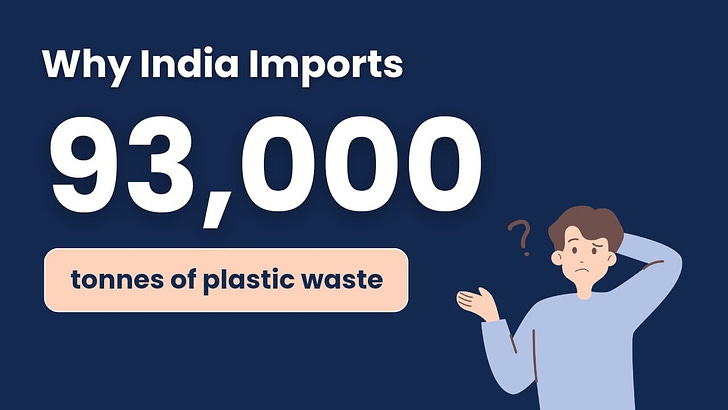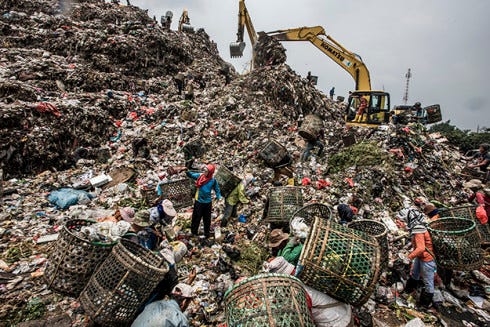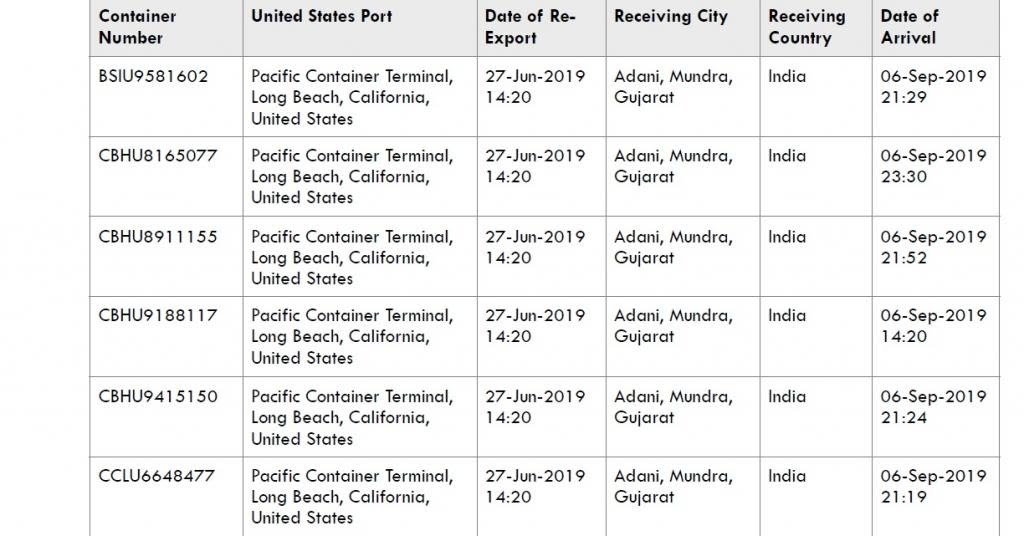😲 Why India Imports 93,000 tons of Plastic Waste?
India has banned single-use plastic but plastic is still coming into the country from other countries. ReadOn to find out!
93,000 tonnes or 465 crore plastic bottles.
That's how much plastic waste India imports.
Yes, imports.
And this is just the number reported on paper. A report by Bloomberg suggests we could be importing much more plastic. It all started by tracing trash mounds in Muzaffarnagar.
So, today we're going to decode:
Why do we import plastic?
How more plastic is smuggled into India?
And the impact of this plastic on our country
🤔Why Does India Import Plastic?
Several companies in India recycle plastic waste, especially PET plastic bottles.
PET is one of the best grades of plastic and can be recycled easily. This is what all our cold-drink bottles are made of.
Like all companies, these companies want two things:
More business
Lower costs
So, they started importing cheap plastic waste from other countries.
According to a report by Pandit Deen Dayal Upadhyay Smriti Manch, we were importing about 1,21,000 metric tonnes of plastic in 2019!
This report and other objections from environmentalists finally convinced the Indian government to ban plastic imports in 2019.
The government had already banned plastic imports in 2014. But at that time it had allowed companies in Special Economic Zones to continue importing plastic: a loophole that was majorly exploited.
This loophole was finally closed in August 2019.
So, plastic problem solved?
Naah, picture abhi baaki hai mere dost.
🤨How Plastic is Smuggled Into India
The plastic import ban soon started a chain of strange things.
Strange thing #1: Between June and August 2019, 58 ships containing plastic waste appeared in Indonesian ports. Indonesia didn't accept this waste and the ships were supposedly sent back to their home country: the US.
But instead, 38 of these ships came to India, according to Indonesian civil society group, ‘Nexus 3’ as well as Basel Action Network (BAN), a global waste watchdog.
👆 This image was provided by the two watchdogs to the organisation Down To Earth.
So, why did India accept these ships full of plastic waste?
"It appears that India is seriously lacking proper enforcement of their law,” Jim Puckett, executive director of BAN told Down To Earth.
And that's not all. Around 500,000 tonnes of plastic waste is smuggled into India through ships carrying paper to be recycled as well.
A majority of this plastic is dumped in Muzaffarnagar. Why Muzaffarnagar? Because that's where a lot of the paper imports end up as the region has many paper mills. And this poses a huge danger to the environment and the people of Muzaffarnagar (more on this later).
Strange Thing #2: Companies that recycle plastic waste started complaining that they had very little plastic to recycle now. As a result, they were facing financial losses. So, in 2022, India allowed some companies to import plastic once again, taking us back to square one.
Now, the strange thing about this is that India produced 34.7 lakh tonnes of plastic in 2019-20 (according to the Minister of Environment, Forest and Climate Change). Only 50% of this was recycled.
Why can't we recycle 50% of the plastic we use?
😰India's Waste Management Problem
Most of the plastic waste that is generated in India is not discarded properly. So, it ends up in landfills, beaches or water bodies.
Over 200 tonnes of waste (most of which was plastic) was recently recovered from our beaches and much more is still littering our coastlines.
This waste does not reach recycling centres, creating a false shortage.
Now, India does have many scrap pickers who collect plastic waste from bins and houses and take them to recycling centres.
But importing plastic is usually much cheaper for these recycling centres than paying scrap pickers. This is also taking an important source of livelihood from these workers.
Worst of all, not all the plastic waste that is smuggled in is useful.
Some of it is hazardous like medical waste and dirty diapers.
And some of it is useless.
This useless waste is usually left to rot: polluting our soil and our groundwater.
And in Muzaffarnagar, a lot of it is used as cheap fuel. Meaning, it is burned.
The ash and the toxic fumes generated by this burning plastic are cancerous and can lead to several diseases.
So, just to save money (and also because of the lack of proper checking at ports), we're exposing our citizens to toxins.
But we're not just going to discuss the problems. Here are some solutions we could think of to solve these issues.
💡The Answer to Our Problems
The first thing that needs to be done is setting up stricter security measures at ports so we can send back ships with contaminated waste.
Then, we need to set up proper waste management stations that can segregate plastic waste and other non-recyclable waste properly.
We could also set up smart vending machines that reward users for disposing of cans and bottles. This could majorly reduce waste on the beaches and ensure we have enough waste to recycle.
Parallelly, we also need to educate people about the importance of recycling.
That's not it. We still have a ton of unrecyclable plastic sitting in our landfills for eternity. We need to invest in research and development to free our country of this poison.
What more can we do to achieve this goal?
Let us know if you liked today's piece. If you did, please share this with your friends, and get them to subscribe :)
See you tomorrow, smarty! 🤓
If you are coming here for the very first time: Join us on WhatsApp and never miss an update! 👇





May be used for Road construction and other construction blocks.... specially made from plastic waste....But very danger for environment.....
so India is still importing waste. where can we get authentic information regarding your article for carrying out scientific research?